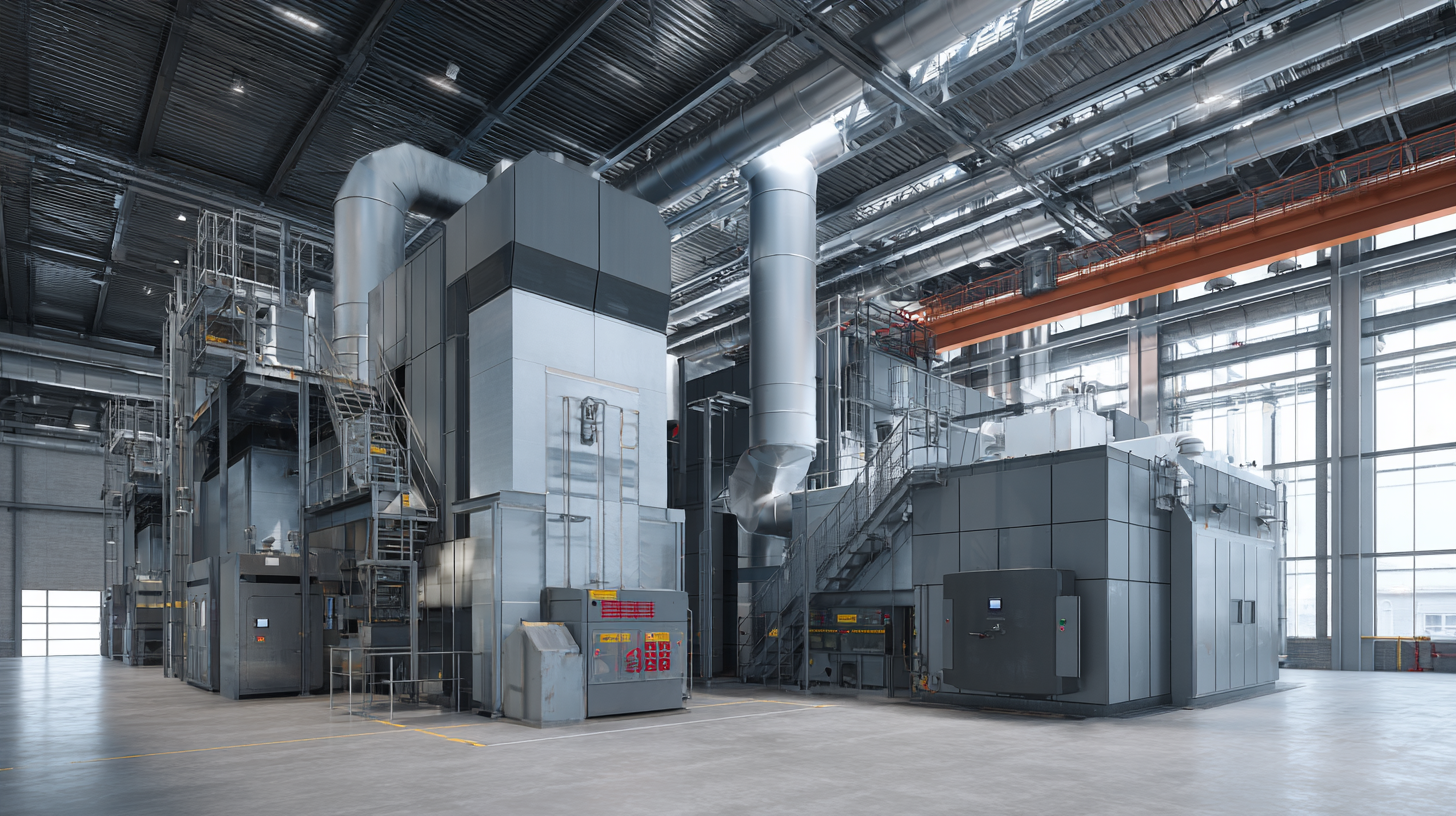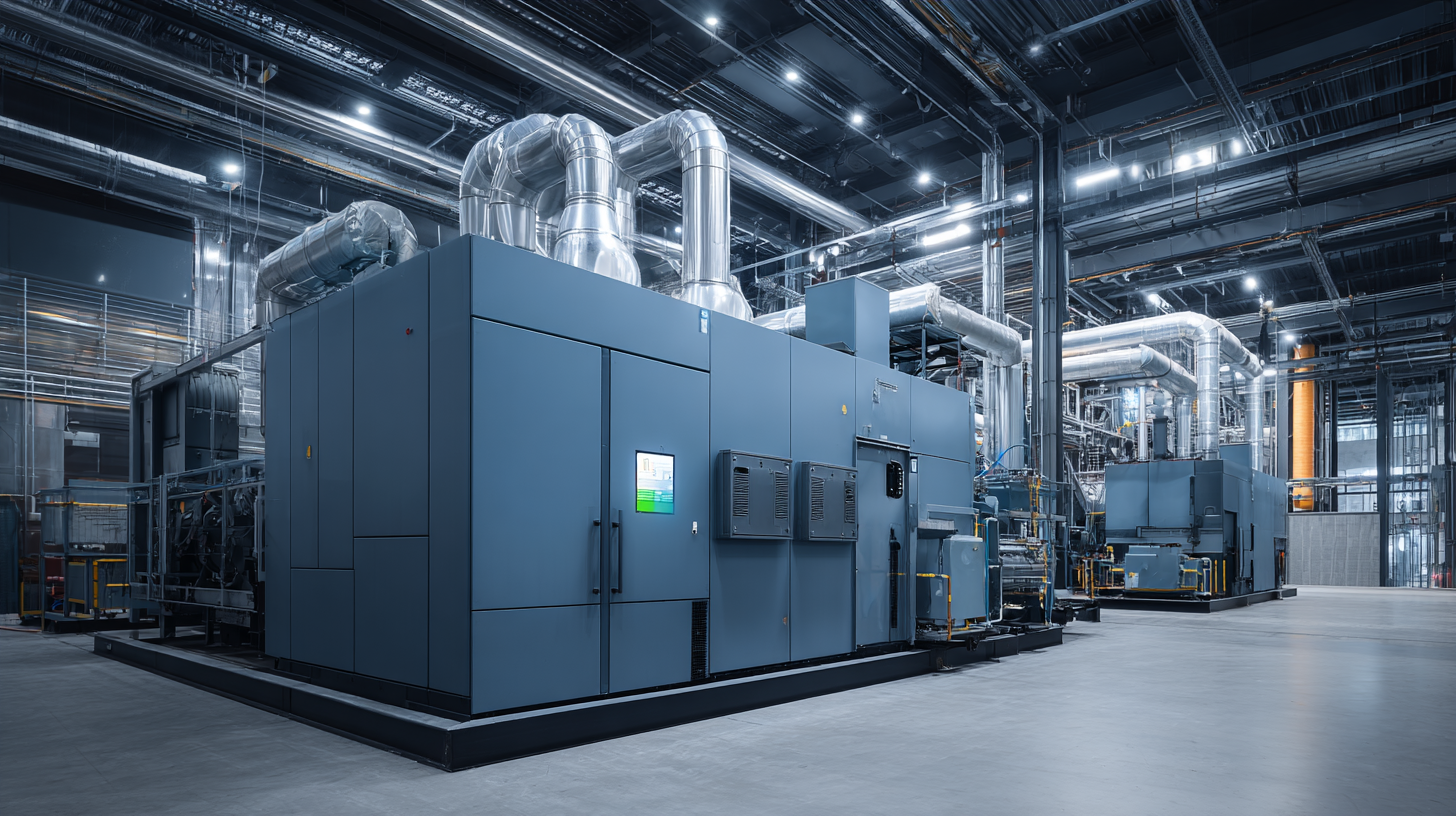Top 5 Waste Heat Recovery Technologies: Maximizing Efficiency with a 20% Energy Savings Potential
In the quest for enhanced energy efficiency and sustainability, waste heat recovery has emerged as a pivotal technology across various industries. Renowned expert in energy systems, Dr. Emily Harmon, remarks, “Harnessing the potential of waste heat recovery can lead to significant energy savings, potentially reducing operational costs by up to 20%.” This statement resonates in a world increasingly driven by the need for innovative solutions to combat rising energy demands and environmental concerns.

The significance of waste heat recovery lies in its ability to capture and repurpose energy that would otherwise be lost during industrial processes. By integrating advanced technologies, industries can drastically improve their overall efficiency, ensuring a more sustainable consumption of resources. As we explore the top five waste heat recovery technologies, it becomes clear that not only do they promise substantial energy savings, but they also pave the way for a greener future. As sectors globally strive to meet stricter environmental regulations and sustainability targets, understanding and implementing these technologies is more crucial than ever.
Overview of Waste Heat Recovery Technologies and Their Importance
 Waste heat recovery (WHR) technologies have emerged as essential tools for enhancing energy efficiency across various industries. According to a report by the International Energy Agency (IEA), around 20-50% of energy used in industrial processes is lost as waste heat. By utilizing WHR technologies, industries can capture this heat and convert it into usable energy, which can yield as much as 20% in energy savings. This is particularly crucial in sectors such as manufacturing, power generation, and oil refining, where significant energy consumption—and consequently waste heat—is prevalent.
Waste heat recovery (WHR) technologies have emerged as essential tools for enhancing energy efficiency across various industries. According to a report by the International Energy Agency (IEA), around 20-50% of energy used in industrial processes is lost as waste heat. By utilizing WHR technologies, industries can capture this heat and convert it into usable energy, which can yield as much as 20% in energy savings. This is particularly crucial in sectors such as manufacturing, power generation, and oil refining, where significant energy consumption—and consequently waste heat—is prevalent.
The implementation of effective WHR systems can lead to enhanced sustainability and a reduction in operational costs. For instance, the U.S. Department of Energy (DOE) estimates that deploying WHR technologies could reduce greenhouse gas emissions by up to 5% in large-scale manufacturing alone. As industries face increasing pressure to meet sustainability goals and comply with stricter regulations, the adoption of WHR solutions not only benefits the environment but also provides a competitive edge through substantial energy savings. By prioritizing waste heat recovery, businesses can optimize their operations and contribute to a more energy-efficient future.
Key Technologies for Efficient Waste Heat Recovery: A Comparative Analysis
Waste heat recovery (WHR) technologies have gained significant attention in recent years due to their potential in enhancing energy efficiency across various industries. According to a report by the International Energy Agency (IEA), roughly 20-50% of energy consumed in industrial processes is lost as waste heat. This presents a critical opportunity for facilities to capitalize on efficient waste heat recovery systems. A comparative analysis of key technologies—such as heat exchangers, organic Rankine cycles (ORC), and absorption chillers—reveals how each can contribute to advancing industrial efficiency and sustainability.
Implementing WHR systems can lead to substantial energy savings. For instance, the use of heat exchangers can recover temperatures of up to 200°C, transforming waste heat into usable thermal energy. Similarly, ORC technology can convert lower temperature waste heat into electricity with an efficiency rate of approximately 10-20%. This aligns with industry projections that indicate a 20% potential energy savings when integrating effective WHR technologies into existing processes.
**Tip:** When considering waste heat recovery systems, assess your facility’s specific heat sources and demands to select the most appropriate technology. Collaborating with engineering teams can enhance the design and integration process, optimizing the return on investment.
**Tip:** Regular maintenance and monitoring of WHR equipment are essential to ensure consistent performance and maximize energy recovery. Implementing a scheduled servicing plan can help identify issues early and keep systems operating at peak efficiency.
Top 5 Waste Heat Recovery Technologies: Energy Savings Potential
This chart illustrates the potential energy savings of the top five waste heat recovery technologies. Each technology has been evaluated based on its efficiency and contribution to energy conservation in industrial applications.
Potential Energy Savings and Economic Benefits of Implementing WHR Solutions
 Waste heat recovery (WHR) technologies present a significant opportunity for businesses aiming to improve their energy efficiency and reduce operational costs. By harnessing surplus heat generated from industrial processes, WHR solutions can potentially offer up to 20% in energy savings. This not only contributes to lower energy bills but also enhances the overall sustainability of operations, aligning with global efforts to mitigate environmental impacts.
Waste heat recovery (WHR) technologies present a significant opportunity for businesses aiming to improve their energy efficiency and reduce operational costs. By harnessing surplus heat generated from industrial processes, WHR solutions can potentially offer up to 20% in energy savings. This not only contributes to lower energy bills but also enhances the overall sustainability of operations, aligning with global efforts to mitigate environmental impacts.
Implementing WHR systems can result in substantial economic benefits for companies. These technologies not only reduce fuel consumption but also decrease greenhouse gas emissions, thereby supporting corporate social responsibility initiatives. As industries face increasing pressure to optimize resource utilization, the adoption of WHR solutions becomes a strategic advantage, fostering innovation and delivering a competitive edge in a rapidly evolving market landscape.
Case Studies: Successful Applications of Waste Heat Recovery in Various Industries
The cement and steel industries face significant challenges in decarbonization, yet they also possess a valuable resource in the form of waste heat generated during production processes. Recent studies have showcased successful applications of waste heat recovery systems in these sectors, highlighting their potential to lower emissions and enhance energy efficiency. By capturing and repurposing waste heat, these industries can not only reduce their carbon footprint but also decrease operational costs, showcasing a dual benefit that is critical in today's environmentally conscious market.
Innovative technologies, including thermal energy storage systems powered by phase change materials, have emerged as effective solutions for harnessing this waste heat. These systems allow for better integration and utilization of thermal energy in various industrial applications, paving the way for more sustainable practices. Furthermore, ongoing research indicates that heat exchanger network synthesis can optimize waste heat recovery, providing further avenues for increasing energy savings. Together, these advancements illustrate a growing trend of leveraging waste heat not just as a byproduct, but as a vital component of industrial energy strategies.
Future Trends in Waste Heat Recovery: Innovations and Predictions for 2025
As industries continue to seek ways to enhance energy efficiency, waste heat recovery (WHR) is poised to become a focal point of innovation. Current trends indicate that the WHR market is expected to grow at a compound annual growth rate (CAGR) of 8.9%, reaching a value of approximately USD 70 billion by 2025. This growth is driven by advancements in technology and increased awareness of sustainability practices, providing industries with the opportunity to recover up to 20% of energy that would otherwise be lost.
Innovations in WHR technology are set to revolutionize the way industries operate. For instance, the integration of organic rankine cycle (ORC) systems allows for the conversion of low-temperature waste heat into electricity, increasing overall efficiency. A recent report from the International Energy Agency (IEA) highlights that utilizing WHR systems can lead to a substantial reduction in greenhouse gas emissions, hinting at a dual benefit of energy savings and environmental sustainability. As the emphasis on carbon neutrality intensifies, we can expect more industries to adopt these technologies, paving the path towards a more energy-efficient future by 2025.
Top 5 Waste Heat Recovery Technologies: Maximizing Efficiency with a 20% Energy Savings Potential
| Technology | Efficiency Gain (%) | Typical Applications | Energy Savings Potential (%) | Future Trends (2025) |
|---|---|---|---|---|
| Heat Exchangers | 15-25% | Industrial processes, Power generation | 10-20% | Enhanced materials and designs |
| Organic Rankine Cycle (ORC) | 10-20% | Geothermal energy, Flue gas recovery | 15-25% | Integration with renewables |
| Regenerative Burners | 25-40% | Ceramic manufacturing, Metalworking | 20-30% | Smart control systems |
| Heat Pumps | 15-30% | Residential heating, Industrial applications | 10-20% | Improved efficiency ratings |
| Thermal Energy Storage | 15-30% | District energy systems, Renewable energy integration | 20-40% | Advanced storage materials |

